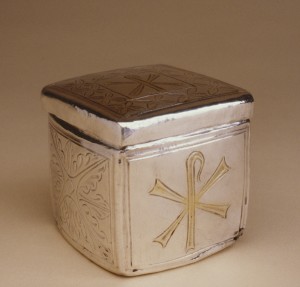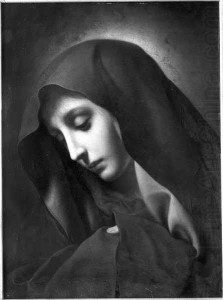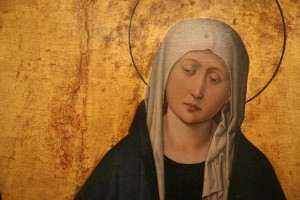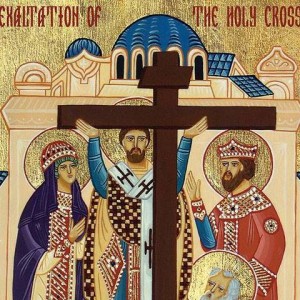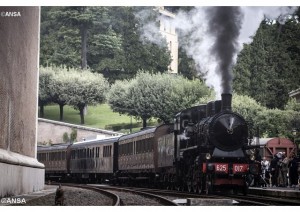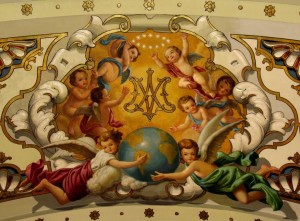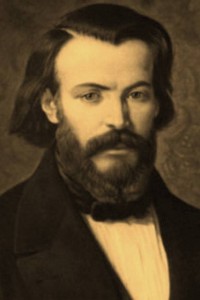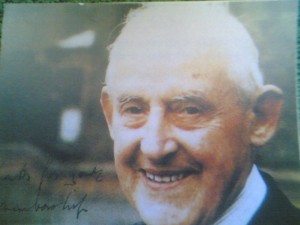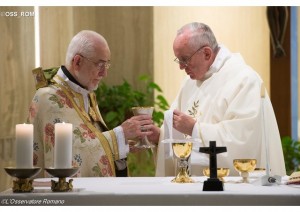 This morning in Rome the Holy Father offered Holy Mass with the recently-elected Patriarch of Cilicia of the Armenians, His Beatitude Gregory Peter XX Ghabroyan, as well as with the Bishops of Synod of the Apostolic Armenian Catholic Church and Cardinal Leonardo Sandri (Prefect of the Congregation for Eastern Churches).
This morning in Rome the Holy Father offered Holy Mass with the recently-elected Patriarch of Cilicia of the Armenians, His Beatitude Gregory Peter XX Ghabroyan, as well as with the Bishops of Synod of the Apostolic Armenian Catholic Church and Cardinal Leonardo Sandri (Prefect of the Congregation for Eastern Churches).
The new Patriarch has taken up the spiritual leadership in a time of Christian persecution and I am sure he’s not going to refrain from speaking out against the injustices and spilling of Christian blood. We need his voice, and that of all the Christian leaders to raise our awareness of these crimes.
In recent months more and more attention has been given by the Pope to the tragic events of the early 20th century that killed many of the Armenians and denied by members of the Turkish government. “Perhaps more than in the early days,” said Pope Francis, [Christians] are persecuted, killed, driven out, despoiled, only because they are Christians”:
“Dear brothers and sisters, there is no Christianity without persecution. Remember the last of the Beatitudes: when they bring you into the synagogues, and persecute you, revile you, this is the fate of a Christian. Today too, this happens before the whole world, with the complicit silence of many powerful leaders who could stop it. We are facing this Christian fate: go on the same path of Jesus. One of many great persecutions: that of the Armenian people”:
“The first nation to convert to Christianity: the first. They were persecuted just for being Christians,” he said. “The Armenian people were persecuted, chased away from their homeland, helpless, in the desert.” This story – he observed – began with Jesus: what people did, “to Jesus, has during the course of history been done to His body, which is the Church.”
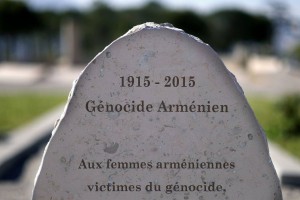 “Today, I would like, on this day of our first Eucharist, as brother Bishops, dear brother Bishops and Patriarch and all of you Armenian faithful and priests, to embrace you and remember this persecution that you have suffered, and to remember your holy ones, your many saints who died of hunger, in the cold, under torture, [cast] into the wilderness only for being Christians.”
“Today, I would like, on this day of our first Eucharist, as brother Bishops, dear brother Bishops and Patriarch and all of you Armenian faithful and priests, to embrace you and remember this persecution that you have suffered, and to remember your holy ones, your many saints who died of hunger, in the cold, under torture, [cast] into the wilderness only for being Christians.”
The persecution of Christians happens in a profound way today. “We now, in the newspapers, hear the horror of what some terrorist groups do, who slit the throats of people just because [their victims] are Christians. We think of the Egyptian martyrs, recently, on the Libyan coast, who were slaughtered while pronouncing the name of Jesus.”
The Pope’s prayer was that the Lord might, “give us a full understanding, to know the Mystery of God who is in Christ,” and who, “carries the Cross, the Cross of persecution, the Cross of hatred, the Cross of that, which comes from the anger,” of persecutors – an anger that is stirred up by “the Father of Evil”:
“May the Lord, today, make us feel within the body of the Church, the love for our martyrs and also our vocation to martyrdom. We do not know what will happen here: we do not know. Only Let the Lord give us the grace, should this persecution happen here one day, of the courage and the witness that all Christian martyrs have shown, and especially the Christians of the Armenian people.”
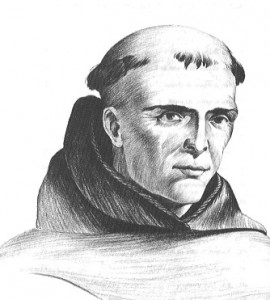 The Holy Father will be in the USA next week and one of the significant parts of the pilgrimage in Washington will be the canonization of Blessed Junipero Serra (1713-1784 ). Serra is our latest saint in the Church, and in the USA yet he is little-known. The Academy of American Franciscan history has prepared a video to introduce the life and work of this Franciscan friar.
The Holy Father will be in the USA next week and one of the significant parts of the pilgrimage in Washington will be the canonization of Blessed Junipero Serra (1713-1784 ). Serra is our latest saint in the Church, and in the USA yet he is little-known. The Academy of American Franciscan history has prepared a video to introduce the life and work of this Franciscan friar.